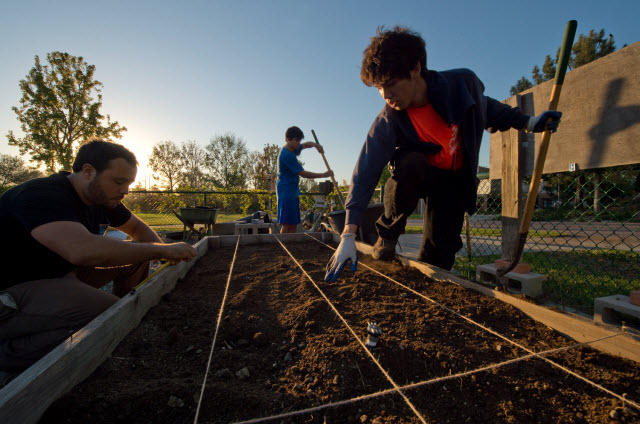 A few grams of soil may contain tens or even hundreds of thousands of microbial species that are largely responsible for the processing of nutrients and carbon.Photo credit: Steve Zylius / UCI Irvine, Calif., Nov. 5, 2015 — Scientists studying microbiomes have created a framework for predicting how the composition of these complex microbial communities may respond to changing conditions.
A few grams of soil may contain tens or even hundreds of thousands of microbial species that are largely responsible for the processing of nutrients and carbon.Photo credit: Steve Zylius / UCI Irvine, Calif., Nov. 5, 2015 — Scientists studying microbiomes have created a framework for predicting how the composition of these complex microbial communities may respond to changing conditions.
The review study, led by Jennifer Martiny, professor of ecology & evolutionary biology at the University of California, Irvine, appears in the Nov. 5 issue of Science. It presents a far-reaching assessment of microbiomes that could affect efforts to improve human health and the health of all the Earth’s ecosystems.
Microbiomes are collections of microscopic organisms – such as bacteria, viruses, archaea, fungi, protozoa, algae and plankton – that inhabit ecosystems as varied as the human digestive tract, the ocean and soil. For instance, the 100 trillion microbes in the human gut – which vastly outnumber the “human” cells in our bodies – are critical to our health and development.
A few grams of soil or sediment may contain tens or even hundreds of thousands of microbial species, each interacting with the others. Together, they are largely responsible for the processing of nutrients and carbon in soil – regulating the decomposition of waste materials, the regeneration of soil fertility and greenhouse gas emissions.
The study delves into microbial evolutionary processes and explores previous research showing that microbial traits – particularly with bacteria – vary predictably in how they have evolved across the “tree of life.” For example, some traits, such as photosynthesis, evolved a long time ago and are shared by large groups of genetically related bacteria. Other traits, such as sensitivity to a particular virus, have evolved many times in many small groups.
Martiny said that analysis of these earlier studies, along with her own work on soil microbial communities, suggested a way to forecast how changes in climate or diet, for instance, might affect ecosystems or the digestive tract. Patterns of microbiome diversity among samples can reveal more information than previously thought when paired with the evolutionary history of microbial traits. Microbiologists could use this information to narrow down the reasons for differences in microbiome diversity among many samples.
Recently, microbiome studies have sparked much public interest. Last week, leading scientists in the field called for the creation of a major federal initiative to better understand microbial communities involved with ecosystem and human health.
The planet hosts a vast variety of microbial communities, from those in undersea volcanos and plant ecosystems to untold numbers of microbes in the human body that fight disease. These microbiomes share many similar traits, and further research on them could reveal basic information about the Earth and its inhabitants.
Martiny added that her study offers just one pathway toward a more integrated grasp of microbiomes across all environments. “In addition to new technologies, we’re in desperate need of new conceptual models to help us understand these complex communities,” she said. “We already have a lot of data about microbiomes that could be put to further use.”
Adam Martiny of UCI, Stuart Jones of the University of Notre Dame and Jay Lennon of Indiana University contributed to the work, which received support from the National Science Foundation, the U.S. Department of Energy and the U.S. Army Research Office.
Irvine, Calif., Nov. 5, 2015 — Scientists studying microbiomes have created a framework for predicting how the composition of these complex microbial communities may respond to changing conditions.
The review study, led by Jennifer Martiny, professor of ecology & evolutionary biology at the University of California, Irvine, appears in the Nov. 5 issue of Science. It presents a far-reaching assessment of microbiomes that could affect efforts to improve human health and the health of all the Earth’s ecosystems.
To continue reading this article, sign up for FREE to

Membership is FREE and provides you with instant access to eNewsletters, digital publications, article archives, and more.



 A few grams of soil may contain tens or even hundreds of thousands of microbial species that are largely responsible for the processing of nutrients and carbon.
A few grams of soil may contain tens or even hundreds of thousands of microbial species that are largely responsible for the processing of nutrients and carbon.







